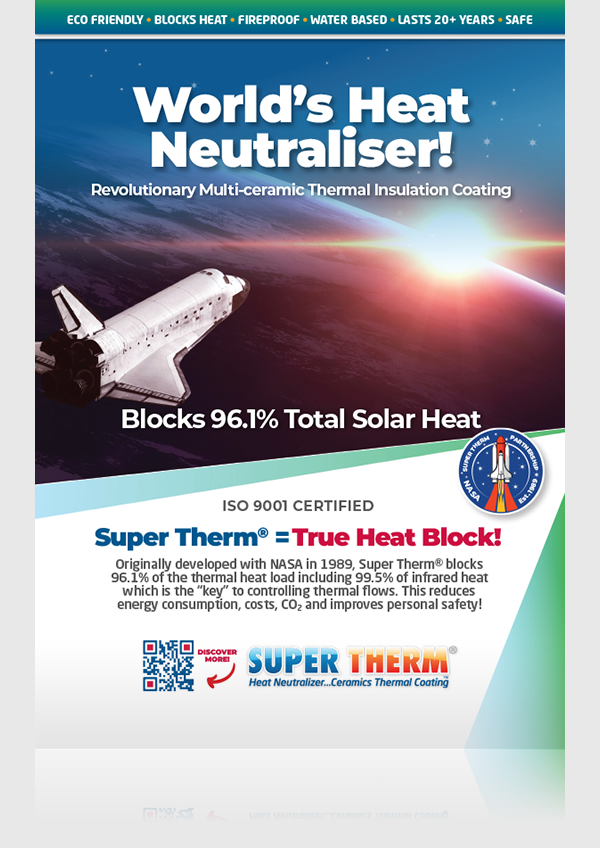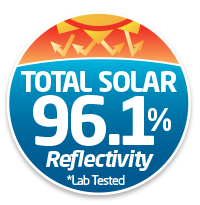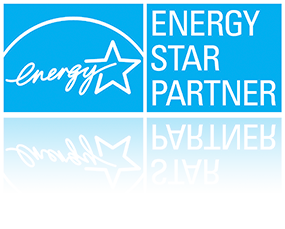Housing Model for Coating Protection
This document outlines the application of the coatings in a typical residence, for heat blocking, sound reduction, fire resistance, mould/mildew protection, moisture resistance and sealing from excess airflow. In the USA the use of SPI products qualifies a house for “GREEN” Status, and in certain States, for Energy Rebates, in Australia we don’t have those systems in place.
Coating Applications:
Foundation Slab:
Apply Super Therm® to the foundation slab in order to block heat from drying out the surface and cracking the concrete thirty days after the slab is poured. This will also seal the concrete from moisture migration to the surface from condensation. Use Enamo Grip on the exterior side walls below the grade level and on the interior basement walls.
Garage:
Coat both the interior and exterior walls, and the ceiling with Super Therm®. This application will block moisture gain and air flow through cracks, while also blocking the normal heat load. Coat the exterior of the doors with Super Therm® to block the heat load, especially when facing North or West.
If the garage has a wooden door (stained), then coat the interior side of the doors with HSC™ at 1270 microns (50 mils) (25 sq.ft. per gallon) to block the heat re-radiation to the interior. Garage floors can be coated using Enamo Grip to harden surface and eliminate the absorption of motor oils, dirt, etc., as well as beautifying and adding to the duration of the surface.
Exterior Walls:
Apply Super Therm® to the exterior wall sides (rough-in sheeting) or surfaces directly over the plywood or gypboard. Super Therm® will replace the Tyvek and/or poly wrap. Set brick over the walls coated with Super Therm®, leaving the normal 1″ or more spacing from the surface. This application will reduce the reliance on fiberglass batt insulation, which absorbs and holds heat.
Interior Walls (of the Exterior Side Walls):
After the interior wallboard is nailed up, taped and floated facing the interior of the rooms, apply Super Therm® over the entire surface, to seal from moisture and airflow. Super Therm® will use its emissivity characteristics to repel heat and stabilize the air temperature inside the house. A finish colour coat or wallpaper can then be applied over the Super Therm®.
Interior Walls (of the Internal Walls):
Coat both sides of the interior walls with Super Therm®, and then apply the coloured finish coat of choice. This application will stabilize air temperatures and provide soundproofing to STC 50 from one room to another. It will also hinder the spread of fire since Super Therm® has a “0” flame spread.
If stucco or render is going to be applied to the exterior walls, apply the Ceramic Stucco. Once the coating has dried, apply Super Therm® in a tinted tan colour or light colour of choice. This system is called iSTUCCO™ and should be applied after the exterior surfaces and corners are sanded to provide for a smooth application.
Bathrooms:
After the application of Super Therm® to the walls and ceiling, apply Enamo Grip in a light colour or clear layer, to seal from steam and moisture loading.
Ceilings:
After all ceilings are textured or taped and floated, apply Super Therm® to reflect the heat and improve lighting reflectivity in the rooms.
Fireplaces:
Coat the back of the fireplace with Super Therm® to help throw heat out into the room.
Attic/Roof space:
Coat the entire underside of the overhead roof decking with HSC™ at 1270 microns (50 mils). Coat the flooring of the attic with Super Therm®. Note: fiberglass in these areas absorbs and holds heat. Roof shingles will load heat and then try to transfer this heat to the interior of the attic/roof space via conduction. HSC™ does not load the heat and therefore does not allow this transfer of heat. Super Therm® repels heat by reflection and high emissivity, therefore stopping any accumulated heat from loading into the flooring structure that could transfer to the ceilings of the rooms below. This application can be also used for the roofing over the garage.
Roofing:
Exterior side – Apply Super Therm® 425 micros wet; 250 microns dry
These recommendations are based on SPI coatings ability to produce the heat blocking characteristics needed to prevent heat load, which in turn reduces the amount of heat available for transfer. SPI coatings work specifically on blocking heat load without thickness. You must follow what the building code dictates, and coatings are a more efficient due to their capability to block heat load, stop moisture load and block air flow, reduce sound transfer and fire protection.

























